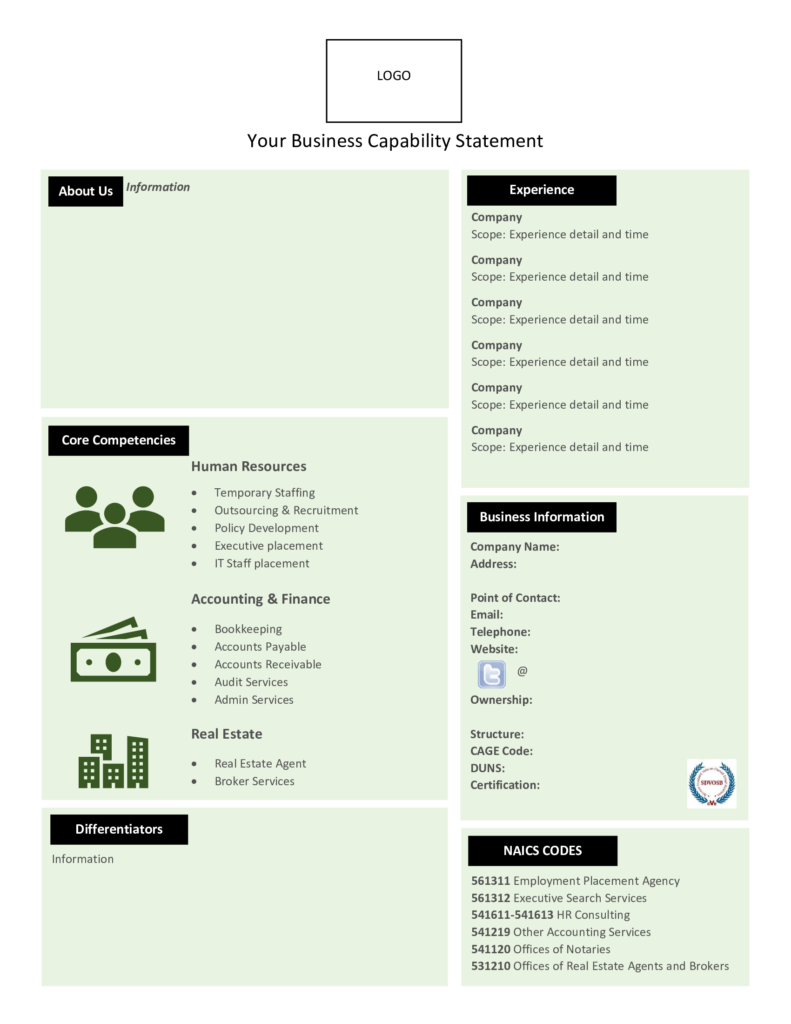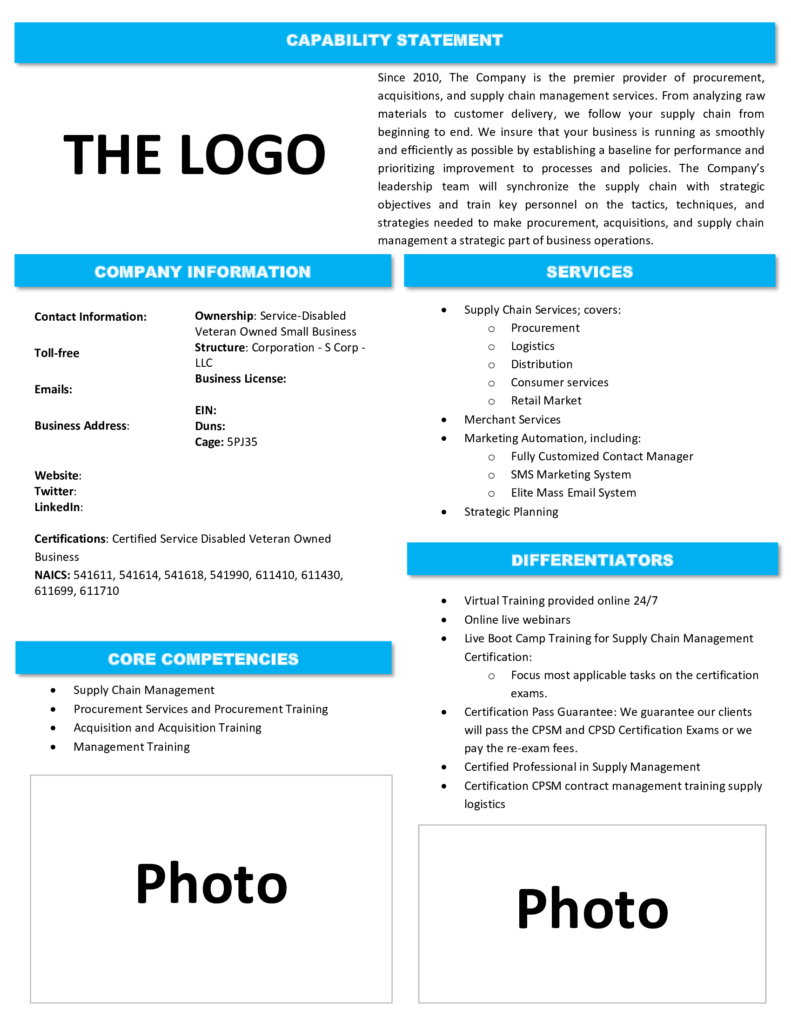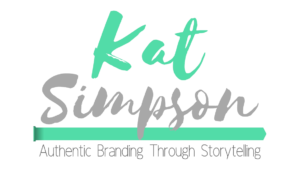Please note that when you buy through links on this site, we may earn a commission.
What is a Capability Statement?
As a business owner, office manager, consultant, or entrepreneur you have probably heard of a capability statement or a corporate one sheet as it is sometimes called. Even more so if you have submitted for a government contract or grant. Capability statements are being more widely requested and even have become a requirement of many federal agencies and even some private sector organizations.
But what is a capability statement, you may be wondering? Simply put, a capability statement is a one-page document that acts as a snapshot of the most important aspects of your business. Think of this incredibly powerful document as your business’ resume. Like a resume, the capability statement provides an overview of your capabilities, experience, achievements, and so on specifically geared toward your prospect’s needs. It could be the difference between you and a competitor in a potential client’s eyes.


This brief, yet effective marketing tool has been around for many years. First introduced through local US government agencies, capability statements are now used by government agencies and private sector organizations all over the world. Their popularity has grown in recent years due to the instant nature of today’s culture. The days of reading page after page of information on potential suppliers have been replaced with bullet points and streamlined outlines.
Why Do You Need a Capability Statement?
Returning to my resume analogy, the capability statement provides your targeted audience (i.e. the business you want to work with) with the pertinent information they need to make an informed decision to either hire your company or continue their search. A unique, well-formatted and strongly written capability statement can distinguish your business from the competition. Not to mention, a beautifully designed statement can grab the attention of the decision-makers when they are reviewing countless bids from the large stack on their desk.
Who Uses Capability Statements
- Decision-makers (i.e. Procurement department managers)
- Primary Contractors and Sub-Contractors
- Corporations
- Government entities
- And more.
When You Need a Capability Statement
Capability statements are used for a variety of reasons and situations. From introductions to specific opportunities, a capability statement is a universal tool that any good business should utilize. The main situations where most businesses employ this powerful document include:
- Introductions to a new potential customer or partnership. For example, a new painting company introducing themselves to local apartment complexes or a seasoning manufacturer introducing themselves to local restaurants or stores to develop a strategic partnership.
- Presenting new services or products to existing customers or clients.
- Targeting a specific opportunity, such as bidding for a government contract or applying for a spot at a local event.
Capability Statement Sections
Although each capability statement is tailored to the specific business or organization, the main sections tend to stay the same.
Capability Statement Introduction
The introduction or about us section of the capability statement should be a paragraph or two at most. This concise statement should provide a compelling and attention-keeping overview of your business. This is typically the first area reviewed and needs to set the pace for the rest of the statement.
Capability Statement Business Overview
The business overview section is where you list your contact information, including your website, social media accounts, and email address. Additionally, this is the section where you would expect to find the pertinent company information such as:
- Structure, i.e. LLC, Corporation, etc.
- Ownership or Government Contract Vehicle, i.e. Small Business, Woman-Owned Small Business, Veteran-Owned Small Business, Minority-Owned Enterprise, etc.
- Certifications and clearances
- Pertinent numbers, i.e. DUNS, Cadge Code, NAICS Codes, etc
Capabilities/Core Competencies
The Capabilities or Core Competencies isn’t the time to list everything your business does. This is the section to include targeted bullet points that highlight the areas you specialize in that your target market would find appealing. For example, if your business is a business consulting firm that handles everything from HR to office cleaning, highlight the areas your potential client is currently interested in outsourcing. You can mention the other areas in another section or just give your main area(s) a more prominent placement or font.
Differentiators on a Capability Statement
The Differentiators section of the capability statement has one main purpose, to set your business apart from your competition. Use this area to highlight things that show how you are uniquely qualified for the opportunity that you’re interested in. For example:
- Innovative processes or tools
- Benefits of your service or product(s)
- Years of experience
- Awards
- Other special features that others may not have or offer

Experience/Past Performance/Clients
In this section of the Capability Statement, highlight your major relevant experience or clients. Keep the experience within the last three years if possible. Procurement leads typically look for the most current experience when choosing possible vendors. Also, highlight clients or projects similar to the one your business is targeting.
Optional Capability Statement Areas
There are a few areas that could be added to a capability statement as space is available. However, it is important not to clutter your design with too much information. It can distract the reader from the important aspects of your statement and end up costing you the contract or opportunity. After all, the goal of a great capability statement is to paint a clear and concise picture of why your business is the best option.
Examples of additional areas
- Leadership Overview
- Relevant Services
- Partners or “As Seen On”
- Vision or Mission Statement
Important Things to Remember When Writing Your Capability Statement
- Write to your target audience and include what they want to know.
- Use an editable format to design your statement. This is a living, breathing document that needs to be easily updated for new opportunities or changes in your business.
- Save your capability statement to a PDF before sending it to potential clients. PDFs are universally accepted and most computers and smartphones come standard with a PDF reader.
- Keep branding consistent. When a potential client reviews your statement, it should be easily recognizable as your business. Use your logo, colors, and font (when available) to create a visibility appealing capability statement that shows your business.
- Visually superior capability statements highlight superior written statements. Although the content needs to be clear and concise, a boring or outdated-looking capability statement may never be read. Working with a graphic designer or digital content developer to provide a high-quality design is worth the investment.
Capability Statement Templates
Now that you know how to write an effective capability statement to win that government contract, it’s time to get to work. Check out my portfolio for examples of some of my previous work. You can also purchase an effective capability statement template from my Capability Statement Designs website.
